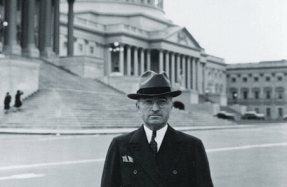BEDE’S BOONDOGGLE


ON AUGUST 2, 1972, STANDING NEAR A TAXIWAY AT WITTMAN FIELD IN OSHKOSH, WISCONSIN, I PRESSED A CHECK FOR $200 INTO THE HAND OF A SHORT, FAT GUY IN A RED SHIRT.

His name was Jim Bede and he was promising to deliver, at some unspecified future date, the parts and materials for me to build a tiny single-seat airplane that looked like a rocketship and was powered by a snowmobile engine. The kit, he promised, would take only about 600 man-hours to assemble—just four months of fulltime work—and cost no more than a new Volkswagen Beetle.
The tiny plane was called the BD-5 Micro. More than 3,000 people—many of them, like me, with imaginations fired but zero experience building airplanes—eventually purchased BD-5 kits. A handful of factory prototype BD-5s made test flights, triggering paroxysms of excitement among us kit-buyers. But plagued by the lack of a reliable engine and reckless financial mismanagement, Bede never delivered a single complete BD-5 kit. The company eventually went bankrupt, and thousands of Bede customers ended up losing some $10 million.
Yet the plane’s allure remained undimmed. A number of diehard builders managed to complete and fly jury-rigged BD-5s powered by improvised engines. In the process, they crashed and killed themselves in horrifying numbers.
But when I recall watching an airshow trio of jet-powered BD-5Js swoosh by at 300 mph, or think back on my brief 1974 flight in a factory prototype, there’s no doubt in my mind: Almost 50 years later, the BD-5 is still the coolest light-plane ever, still the ultimate private pilot’s fantasy.
Jim Bede’s place in aviation history is that of
You’re reading a preview, subscribe to read more.
Start your free 30 days



